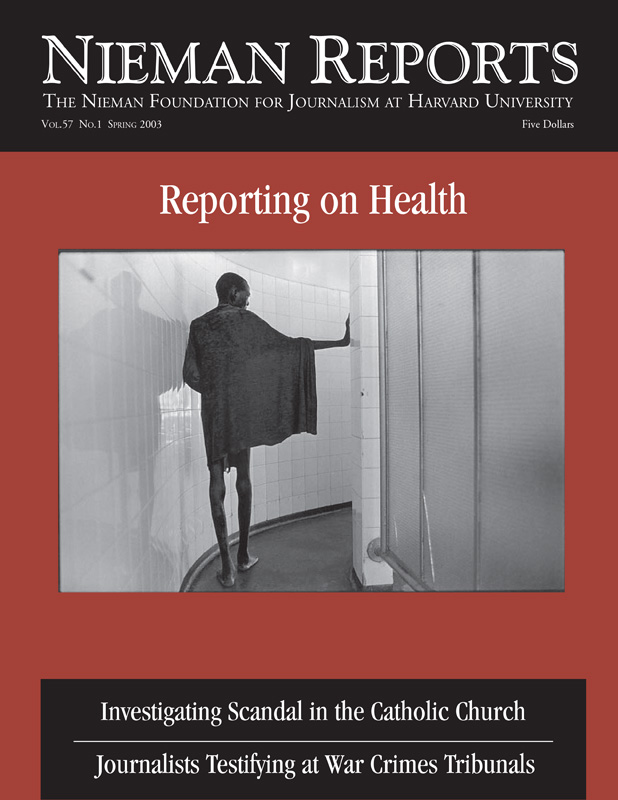As New England bureau chief for the Los Angeles Times, Elizabeth Mehren reports for West Coast readers on the region’s newsworthy events. In her story opening our series of articles about press coverage of the Catholic Church’s sex abuse scandal, which began in Boston, Mehren provides a journalistic context for understanding the pressures reporters and editors were under as this “runaway freight train of a story … roared along with fierce—and sometimes frightening—momentum.” As Mehren notes, it is now more than a year since this story broke, and it “shows no signs of going away, much less slowing down.”
Walter V. Robinson, editor of The Boston Globe’s Spotlight Team, which broke the story and led the press’s investigation of sexual abuse by Catholic priests and cover-up by the archdiocese, chronicles how his newspaper secured the documents it needed to break the secrecy surrounding these crimes and used them to give the church’s victims a voice they hadn’t had. Stephen Kurkjian, a member of the Globe’s Spotlight Team who has worked on the clergy abuse scandal for more than a year, writes about how difficult it has been to obtain the necessary documents to report in-depth on the Boston archdiocese’s finances. Given the secrecy with which the church handles its financial matters, Kurkjian reports that “we could identify our sources only as ‘unnamed,’ and could not even hint at their business affiliation.”
From Rome, John L. Allen, Jr., Vatican correspondent of the National Catholic Reporter and a Vatican analyst for CNN and National Public Radio, explains why there is so little solid news coverage of the Vatican by English-language journalists. Allen explains how this affects his coverage: He is forced to cut “through popular misconceptions that are reinforced by careless reporting.” He also describes difficulties inherent to the beat, including the need to have time to cultivate sources and learn languages, to figure out how to cope with the absence of “spin” and too many unnamed sources, and the lack of editorial commitment and knowledge in the newsroom.
From Ireland, Emily O’Reilly, political correspondent with The Sunday Times who has written and broadcast on the topic of clerical sexual abuse, explains how Irish libel laws and “cultural censorship”—“an unwillingness by the news media in general to give the bad news until the populace has been adequately softened up in advance”—made “sexual deviancy within the priesthood [something that] had been whispered about for decades; yet, during those years, no reporter was prepared to go behind the whispers.” The story broke in the Irish media only after British TV stations aired a series of documentaries. As O’Reilly notes, “A phenomenon of Irish journalism, and Irish life, is that our scandals are often first made public by reporters in another country, usually Britain.”
In the early 1980’s, the Chicago Sun-Times devoted 18 months to investigating suspected financial wrongdoing of Cardinal John Patrick Cody. Roy Larson, then the newspaper’s religion editor, writes about how Publisher James Hoge issued a warning to the investigative team: “We’re going to have to do as careful and as in-depth reporting as anyone’s ever done, because this is dynamite.” As Larson reports, “the stories were explosive—even before they were published.” The Cody case ended inconclusively but, Larson says, at that time his paper’s “investigation of the cardinal and archdiocese was unprecedented.”


